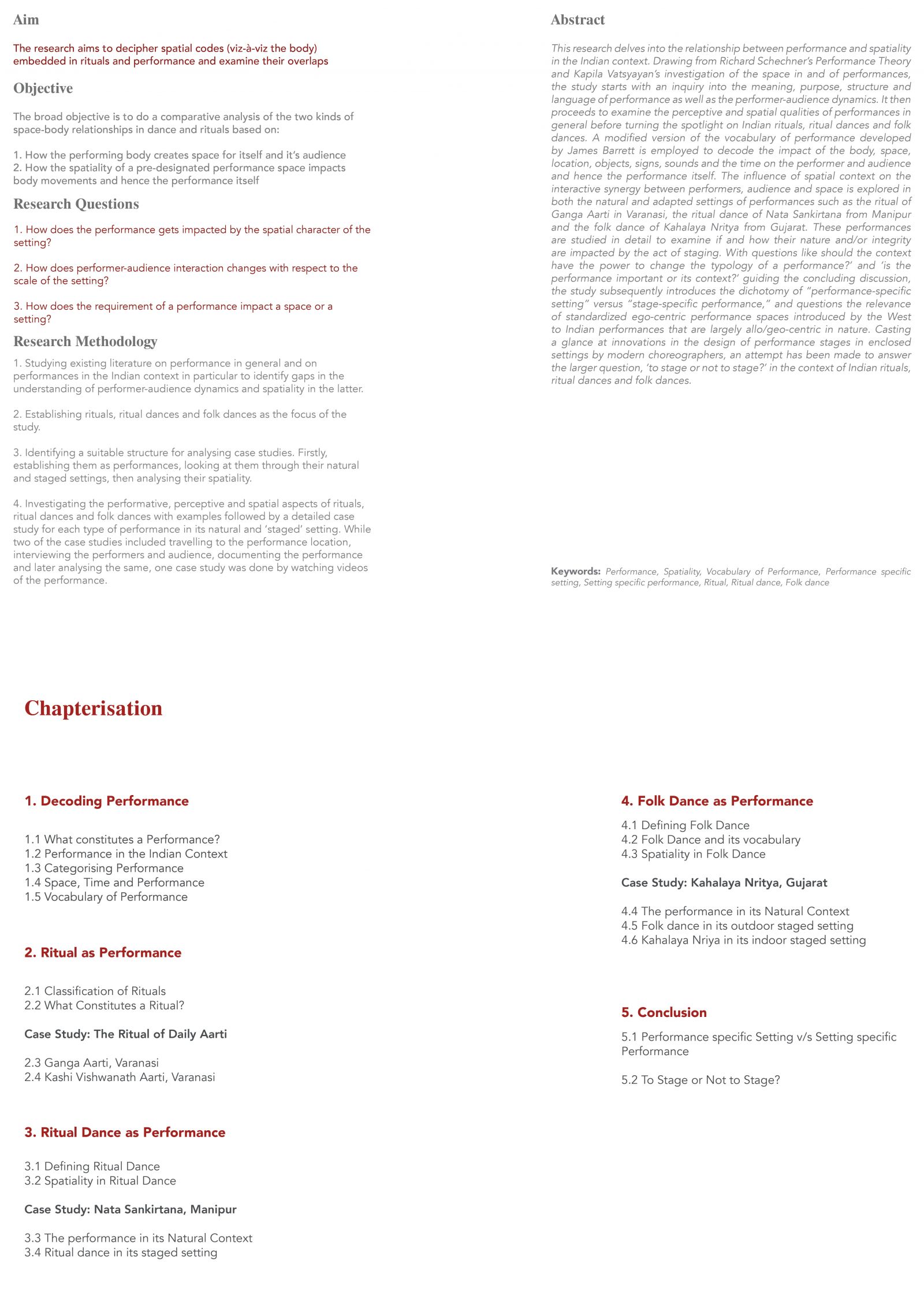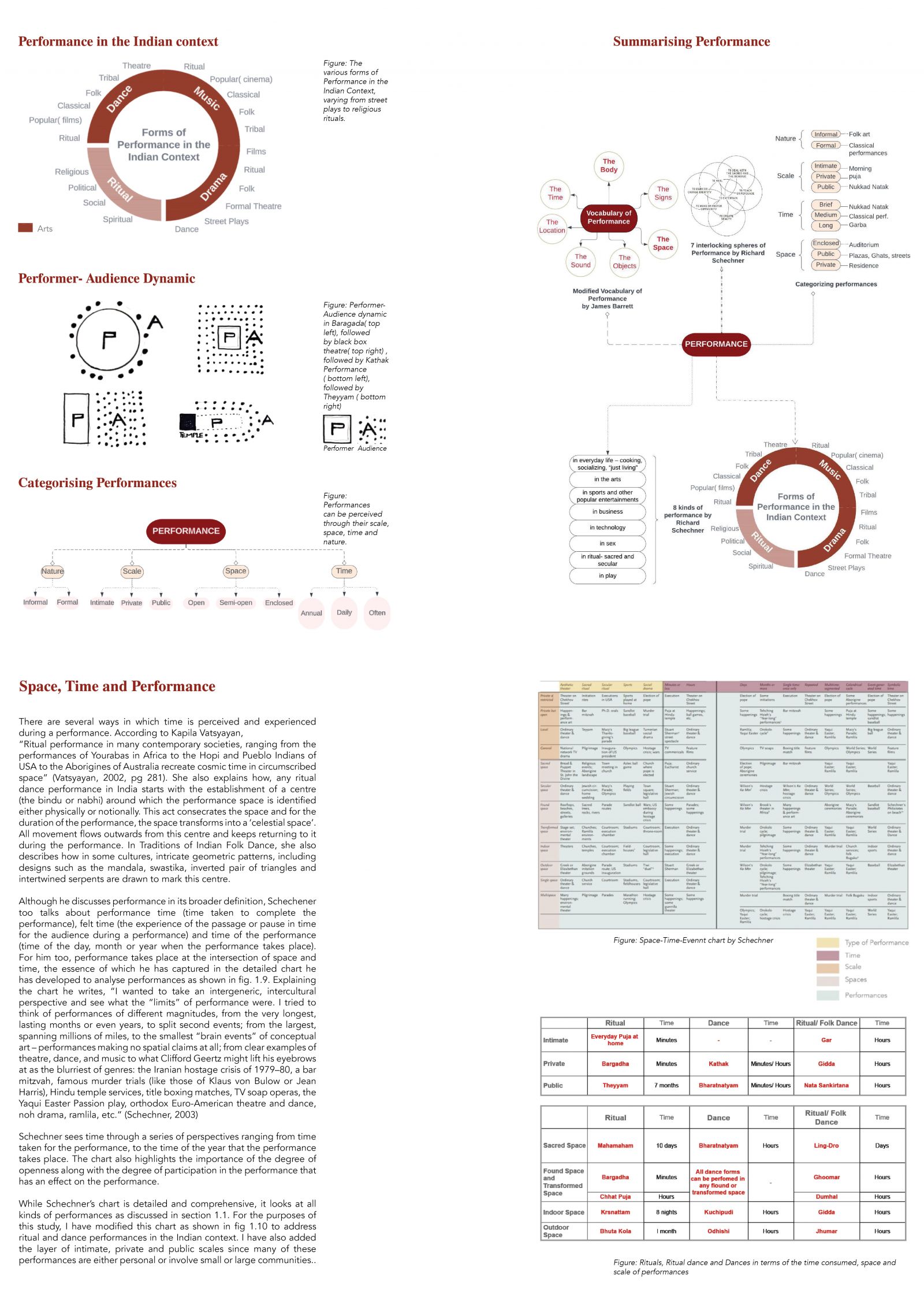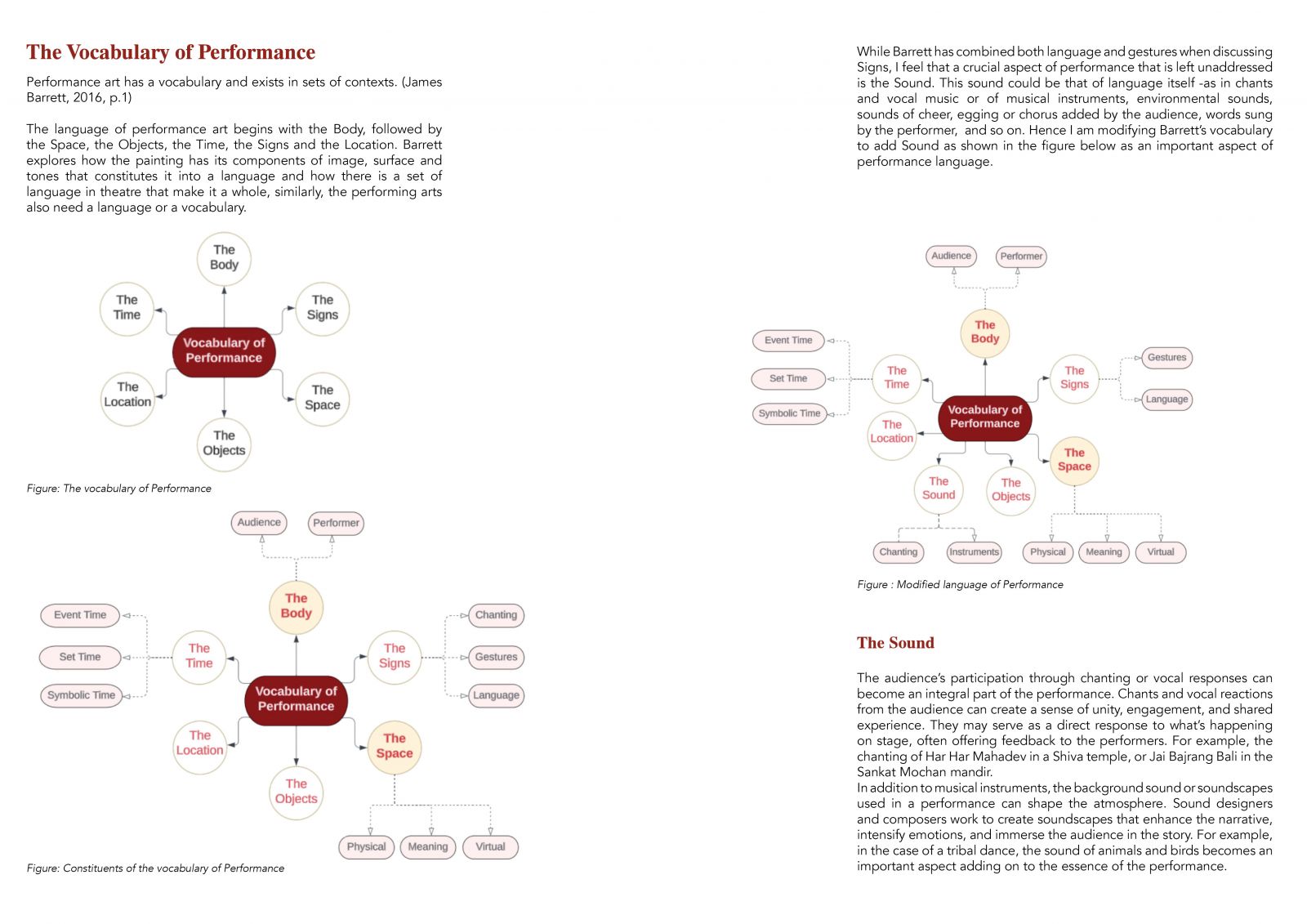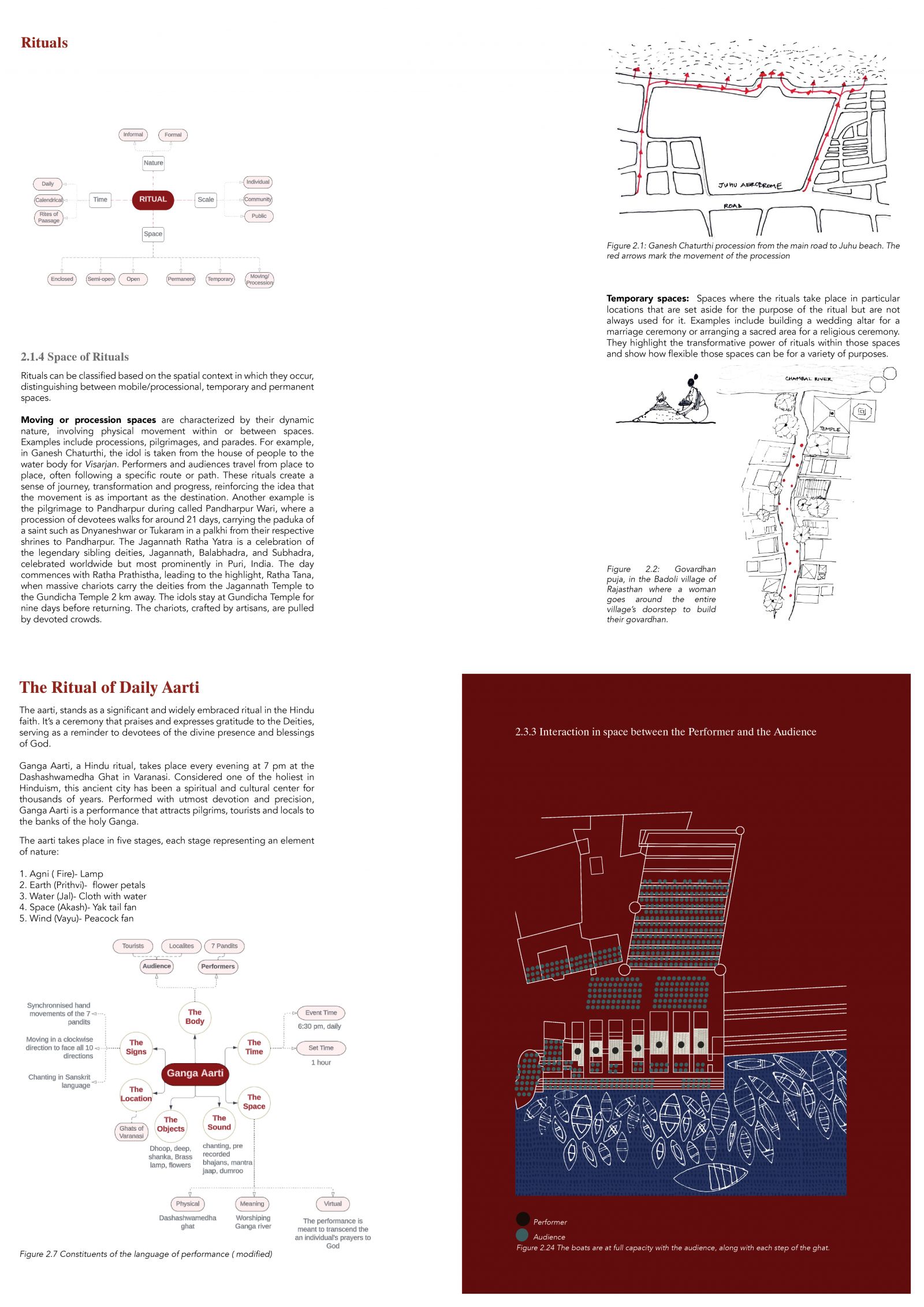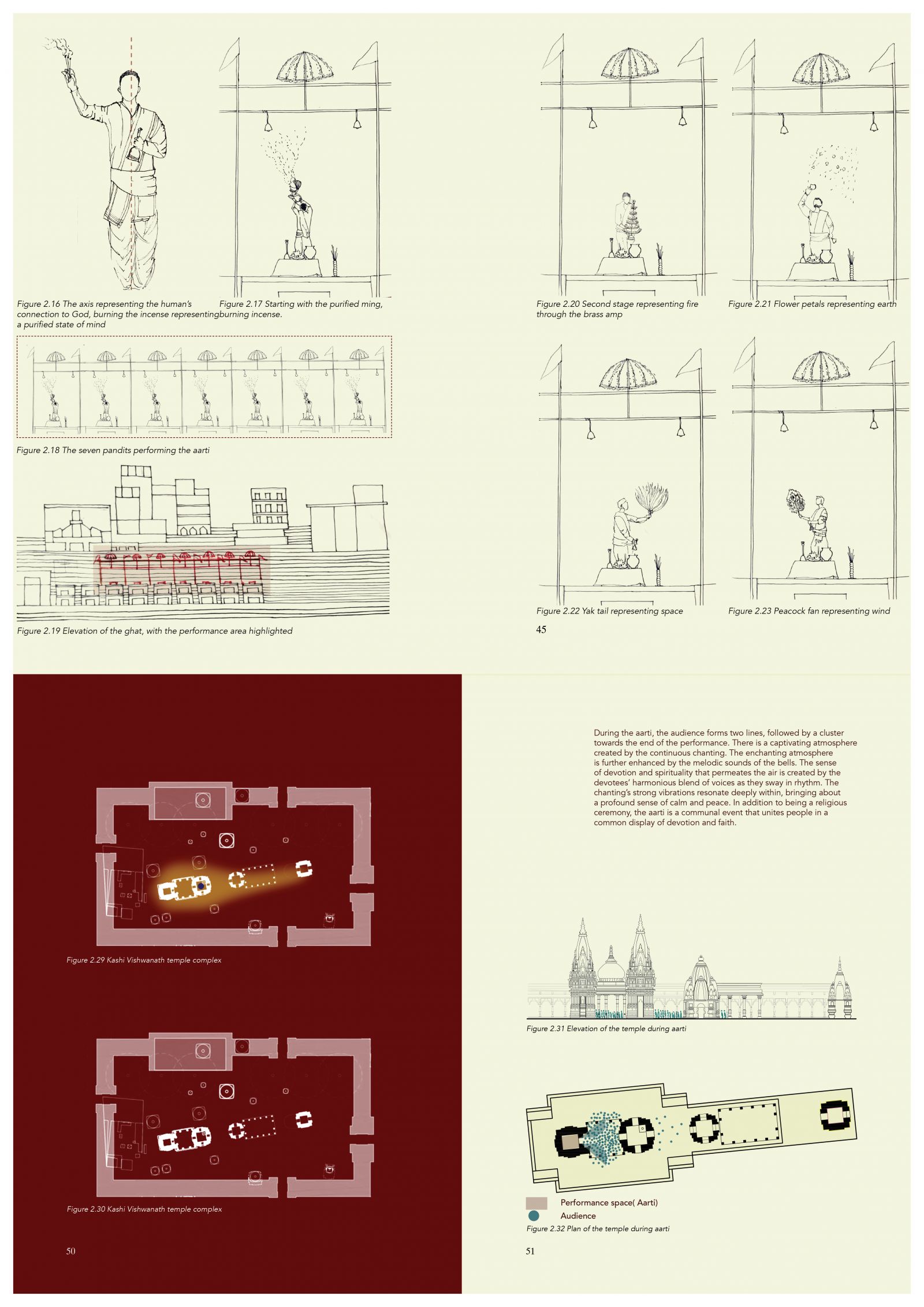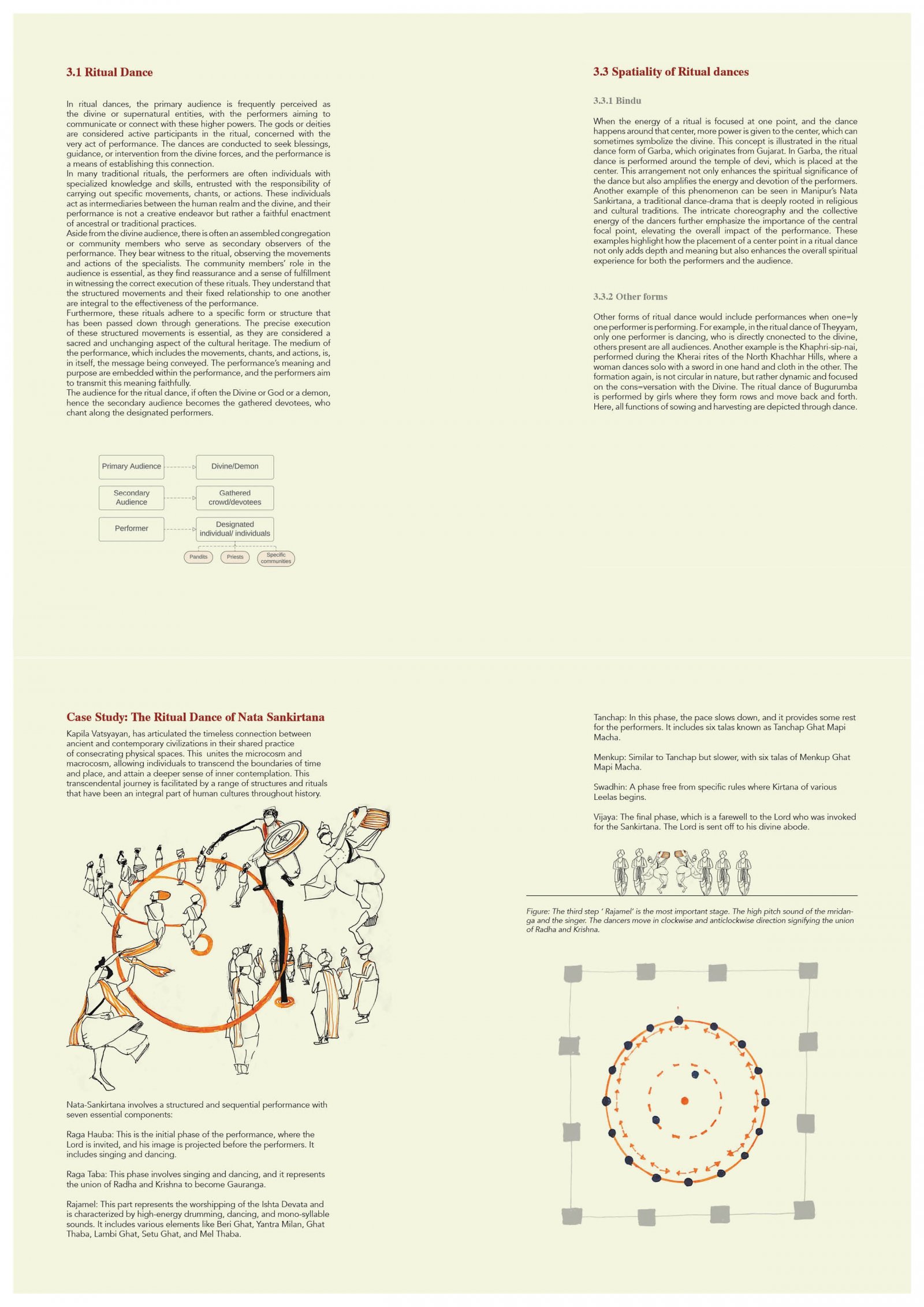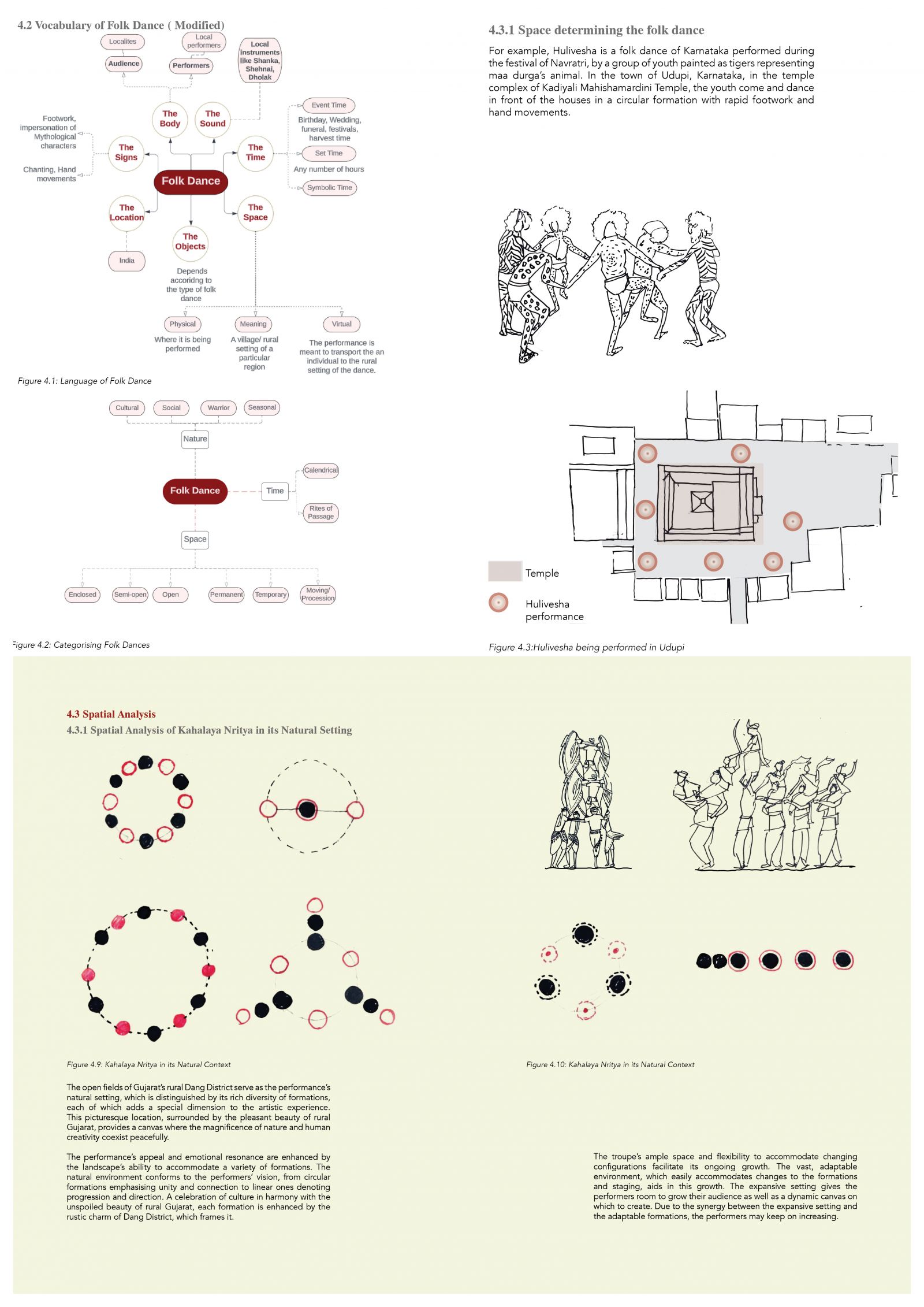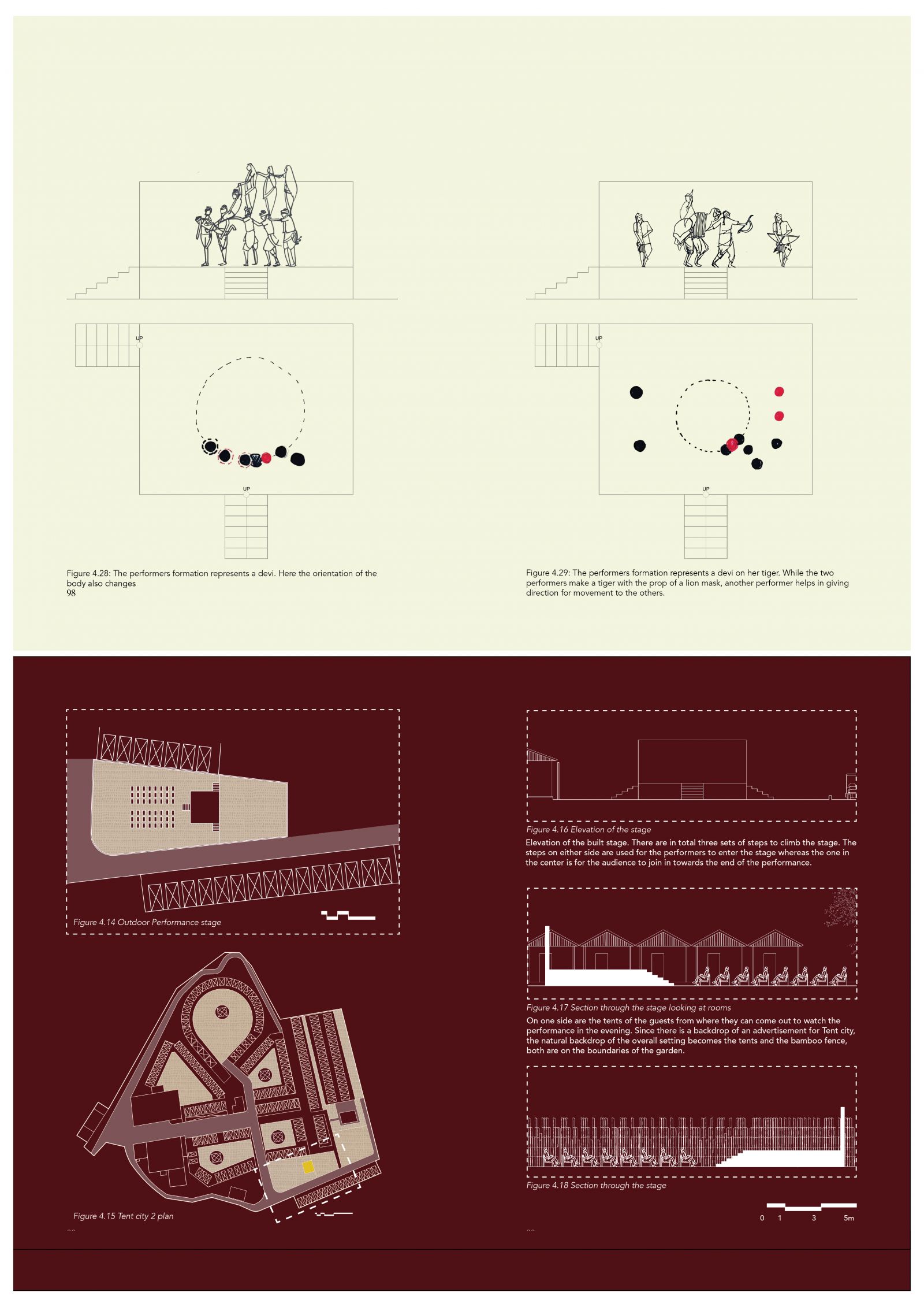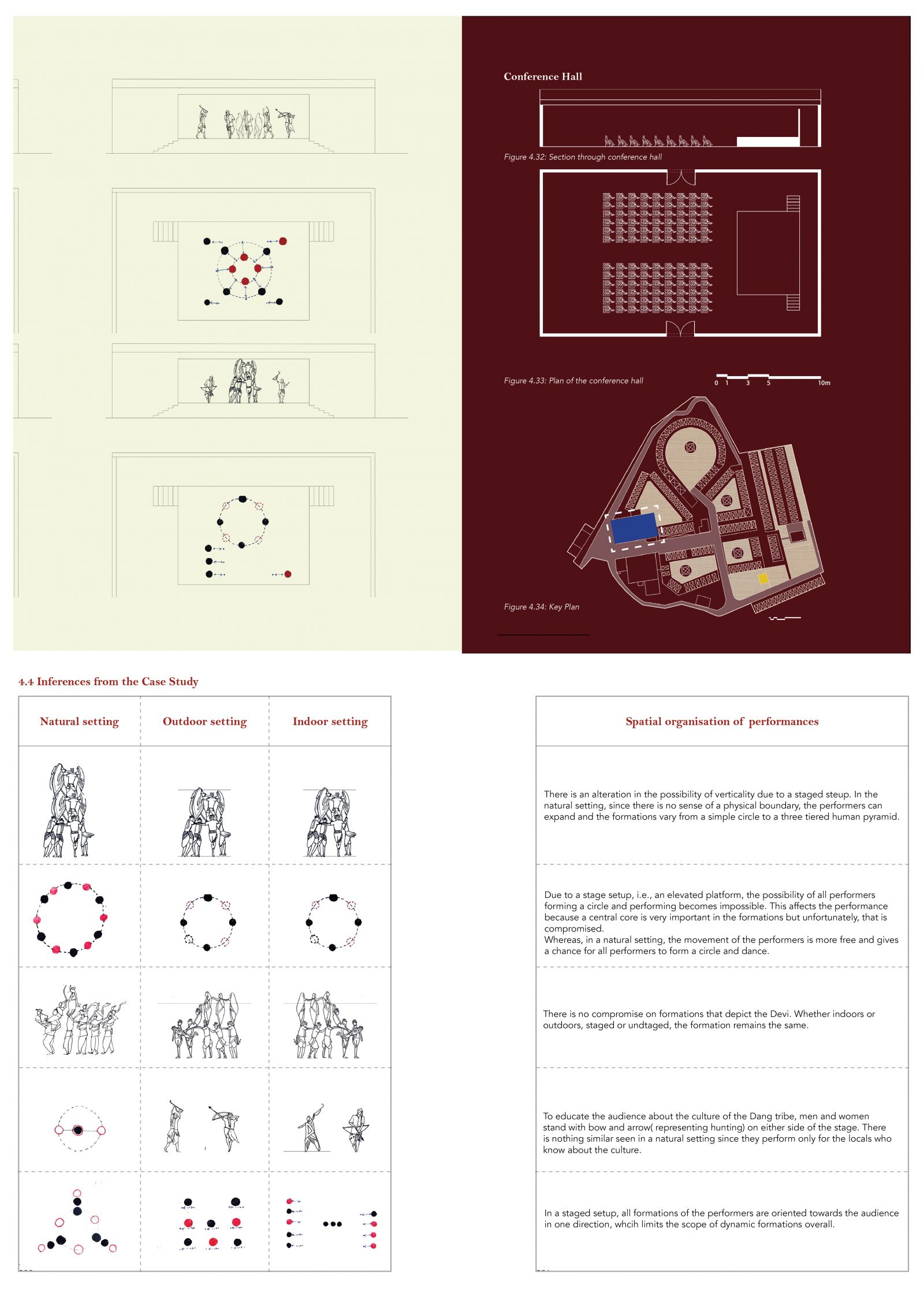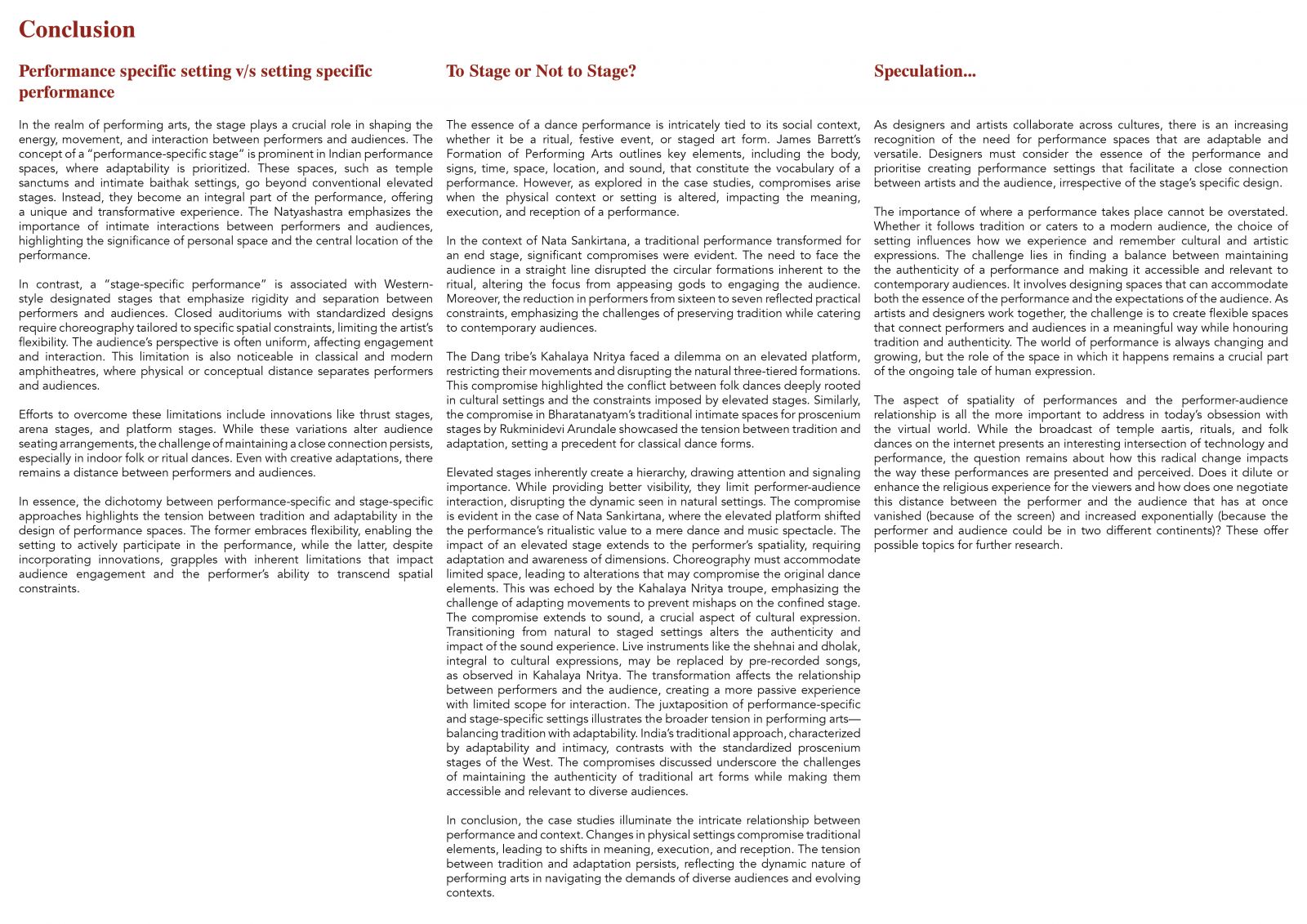Your browser is out-of-date!
For a richer surfing experience on our website, please update your browser. Update my browser now!
For a richer surfing experience on our website, please update your browser. Update my browser now!
This research delves into the relationship between performance and spatiality in the Indian context. Drawing from Richard Schechner’s Performance Theory and Kapila Vatsyayan’s investigation of the space in and of performances, the study starts with an inquiry into the meaning, purpose, structure and language of performance as well as the performer-audience dynamics. It then proceeds to examine the perceptive and spatial qualities of performances in general before turning the spotlight on Indian rituals, ritual dances and folk dances. A modified version of the vocabulary of performance developed by James Barrett is employed to decode the impact of the body, space, location, objects, signs, sounds and the time on the performer and audience and hence the performance itself. The influence of spatial context on the interactive synergy between performers, audience and space is explored in both the natural and adapted settings of performances such as the ritual of Ganga Aarti in Varanasi, the ritual dance of Nata Sankirtana from Manipur and the folk dance of Kahalaya Nritya from Gujarat. These performances are studied in detail to examine if and how their nature and/or integrity are impacted by the act of staging. With questions like should the context have the power to change the typology of a performance?’ and ‘is the performance important or its context?’ guiding the concluding discussion, the study subsequently introduces the dichotomy of “performance-specific setting” versus “stage-specific performance,” and questions the relevance of standardized ego-centric performance spaces introduced by the West to Indian performances that are largely allo/geo-centric in nature. Casting a glance at innovations in the design of performance stages in enclosed settings by modern choreographers, an attempt has been made to answer the larger question, ‘to stage or not to stage?’ in the context of Indian rituals, ritual dances and folk dances.
View Additional Work